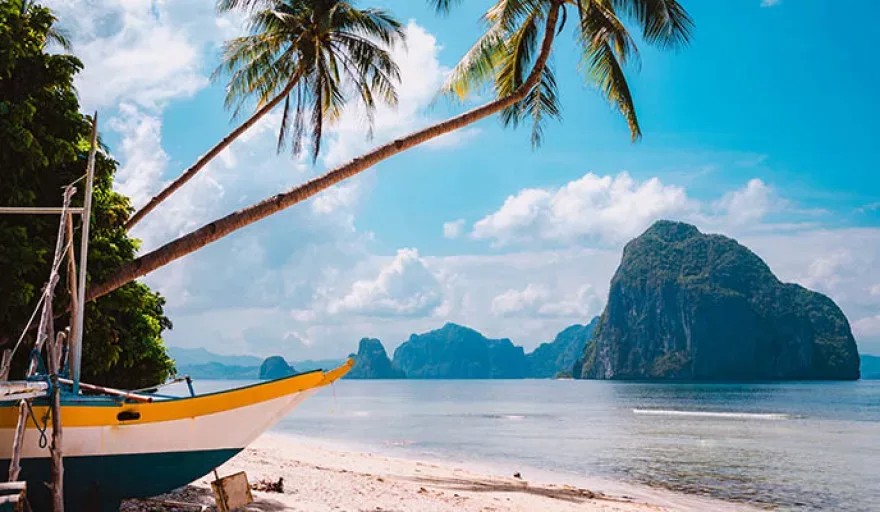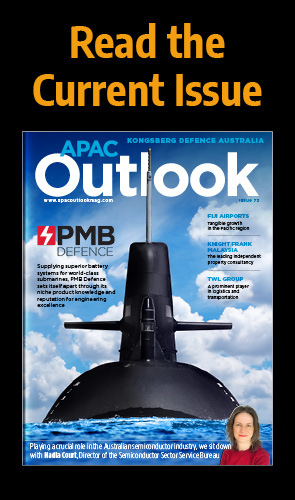The Philippines is a Southeast Asian nation consisting of 7,641 islands. It’s renowned for its pristine white sand beaches, emerald rice terraces and dramatic volcanic landscapes.
With so many islands to choose from, the Philippines caters to the tastes of many different tourists. Adventurous travellers will enjoy playing at being Robinson Crusoe somewhere along Palawan’s deserted coastline or ascending the rugged peaks of the Sierra Madre mountains. Those who’re all about the beaches should head to the Visayas, where there are plenty of opportunities to island hop. Throughout the archipelago, surfing, diving and kitesurfing are popular activities.
Luzon is the largest and most populous island, home to the sprawling capital Manila. However, even here you’ll find remote, mist-shrouded towns, volcanic mountains to climb and the lesser-explored Bicol region, renowned for its spicy food.
The islands consist of a patchwork of different cultures, having originally been populated by competing tribes. Thanks to their sea-trade connections, the islands saw migrants arrive from China, Japan, India and other Asian countries. Three hundred years of Spanish rule introduced Catholicism into the area. Now, Filipino culture is a blend of these different countries and traditions, making it a fascinating place to visit.
Q&A WITH EUGENE YAP, PRESIDENT, HRAP
The Hotel and Restaurant Association of the Philippines (HRAP) aims to take the lead role as the single voice organisation representing the Philippine private business sector in the hotel and restaurant industry. It is comprised of several sectors, representing the many facets of the country’s tourism industry: the hotel sector; the restaurant sector; suppliers and academe.
Representing so many different organisations and businesses has its challenges. We sat down with Eugene Yap, President of HRAP, to discuss the association’s core activities, difficulties and goals.
Can you tell me about the history of the association?
Eugene Yap (EY): Back in 1951, the Philippines barely had a tourism industry. The nation had only one thing in mind – recovery from the war. Amidst the rebuilding, there were only four hotels in Manila. There were no plush restaurants, just unpretentious family eateries. The only tourists were journalists and photographers, chronicling the bombed-out rubble of Corregidor and Intramuros.
The hotel owners struggled with issues such as employee theft, breakages and losses. Deciding to take a common stand, they founded the Hotel and Restaurant Association of the Philippines (HRAP) in 1951, and officially registered the organisation with the Securities and Exchange Commission. It was reincorporated for another 50 years in 2001.
Now, almost seven decades later, the association is a fully-fledged organisation representing the interests and concerns of the hotel and restaurant industry for the entirety of the Philippines.
Have there been any challenges for the association, either when it was initially incorporated, or today?
EY: We started when the Philippines’ economy was still recovering from the war. This was a challenge, but even so, the association’s members banded together to upgrade their management skills and services, and to keep up with trends abroad. The country had begun to reap the rewards of these industry-wide innovations when the economy started to pick up. When tourists began to arrive in ever-increasing numbers, more five-star hotels were built.
These days our challenges are different. We have a problem with the swift turnover of skilled labour, due to increasing competition from other industries. Many hospitality business owners struggle to hire and retain staff.
Small businesses also struggle to keep up with technology-driven innovations and changing guest expectations. Competition by shared space providers is also disruptive, as many are not bound by the same rules and regulations as traditional establishments, making it easy for them to undercut pricing.
However, despite these difficulties, the warmth and friendship of Filipino hospitality never diminishes.
What are HRAP’s key visions and goals?
EY: Aside from being the single voice representing the Filipino hospitality industry, we also want to promote unity and cooperation both within and beyond the industry. We desire to encourage and foster high ethical standards in business, resulting in fair and honest competition. We also provide industry representation in matters of government regulatory policies and laws affecting the industry.
Another goal is to undertake programmes and projects that will upgrade and professionalise the industry – something that may, ultimately, prevent high staff turnover.
What are HRAP’s core activities?
EY: We have general membership meetings every quarter, allowing members to network with each other. There are also sectoral meetings, which address specific issues faced by individual sectors in the industry.
HRAP has a commitment to training and education. In 1995, we collaborated with Singapore Hotel Association Training and Education Centre (SHATEC) to offer training and management programmes.
We concern ourselves with all issues affecting the hotel and restaurant industry, including but not limited to environment, governmental liaison, ethics, health, legislation, finance and more. As the umbrella organisation of the hospitality industry, we actively participate through consultancy and position papers.
Are there any products in the pipeline you wish to highlight?
EY: We hope to revive a project known as Chefs on Parade next year. It’s our flagship culinary competition project, which encourages and nurtures talented chefs and culinary artists to seek improvement in their craft and become world-class experts. This flagship project also inspiring other competitions by independent culinary organisations, helping create a dynamic, flourishing culinary scene in the Philippines.
Recently, we conducted a digital marketing workshop for our members through SHATEC and have lined up several modules for next year. This is to keep our members up to date with current global technologies.
Lastly, do you feel optimistic about the future of the tourism industry in the Philippines?
EY: With the current infrastructure of the government almost in place, hotels are now able to provide the country with more employment opportunities and create a better playing field for all the stakeholders in the industry.
The fact is, as long as there are people who invest in this country, who are willing to put up structures and invest in the hotel and restaurant industry, the only way to go is up.
MANILA IN FOCUS
Manila is the Philippines’ capital – a megacity with a greater metropolitan population edging towards 13 million. At first glance, the city is an overwhelming sprawl of malls, skyscrapers and congested roads. But look a little more closely and you’ll find a whole host of hidden gems, from crumbling ruins to hip new art galleries.
To delve deeper into the city’s Spanish colonial past, head to Manila’s historic centre, the remnants of a walled city known as Intramuros. Fort Santiago is a landmark bearing traces of the city’s troubled history – it was occupied by the British in the 16th century and used as a prison and torture chamber by the Japanese during World War II. You’ll find heritage churches and art galleries here as well.
If you’re getting hungry, check out Binodo – the oldest Chinatown in the world. The winding streets are home to hundreds of hole-in-the-wall restaurants serving mouth-watering Asian cuisine.
Manila has plenty of bars, museums and other landmarks for you to explore. There’s never a dull moment in this energetic city.
THE PHILIPPINES’ TOP THREE UNESCO WORLD HERITAGE SITES
The Philippines boasts six UNESCO-designated sites – three natural and three cultural – and a further 26 on its tentative list. UNESCO chooses sites according to their cultural, historical or scientific significance, and they then become protected spaces. There are no shortage of stunning natural sites or cultural attractions on the Philippines, but these three places constitute the islands’ most iconic landmarks.
Baroque Churches of the Philippines
These four Baroque Churches – variously located in Manila, Santa Maria, Paoay and Miagao – were designated as a UNESCO site in 1993, thanks to their influence on architectural design in the Philippines. They were conceived of by Spanish missionaries, who wanted to build churches inspired by the architecture of their homeland. However, since they weren’t trained in architecture or engineering, they had to rely on residents and Chinese migrants, who gave the Spanish designs an Asian twist.
The churches’ final designs were shaped by limited access to materials, and a need to rebuild after natural disasters such as earthquakes, leading to shorter churches with wide bases and buttresses – a style now known as Earthquake Baroque. Inside, the churches are elaborately decorated, with biblical scenes incorporating island iconography such as palm fronds, or saints dressed in traditional Filipino attire.
The Ifugao Rice Terraces
These dramatic, emerald coloured rice terraces hug the steep contours of the Philippine Cordillera mountains, providing a breath-taking site. There are five clusters, located across four municipalities, each with slightly different patterns. For 2,000 years, they have been maintained by the Ifugao ethnic group, and have been passed on from generation to generation.
According to UNESCO: “The Ifugao Rice Terraces epitomize the absolute blending of the physical, socio-cultural, economic, religious and political environment. Indeed, it is a living cultural landscape of unparalleled beauty.”
Puerto-Princesa Subterranean River National Park
This park is a protected conservation area, renowned for its different types of forest, and a karst landscape of sinkholes, caves, springs and mountains. What elevates it to UNESCO status, however, is its 8.2-kilometre-long underground river. This subterranean river system is important because it flows directly into the sea, making it a significant global phenomenon.
The cavern that houses the river is characterised by dramatic, eye-catching rock formations. As well as being a UNESCO site, it was also designated one of the “New7Wonders of Nature” in 2011. Unsurprisingly, taking a boat tour down the river is a popular tourist activity. However, despite its popularity, the park is excellently well-preserved.
GETTING TO AND AROUND THE PHILIPPINES
The Philippines is a popular tourist destination, with frequent international flight connections. The largest airport is Ninoy Aquino International Airport near Manila, which handled 42 million passengers in 2017. More than 30 airlines offer direct flights to destinations ranging from Hong Kong to New York.
Air Asia, Philippine Airlines and Cebu Pacific are the three largest domestic carriers, offering scheduled flights to destinations across the archipelago. The islands are also linked by a network of ferry routes, ranging from multi-decked passenger ferries to “bangkas” – small, motorised outriggers.
Get around cities using metered taxis or use local jeepneys – jeeps left behind after World War II, customised with religious art, neon-coloured paintings and colourful headlights.






















